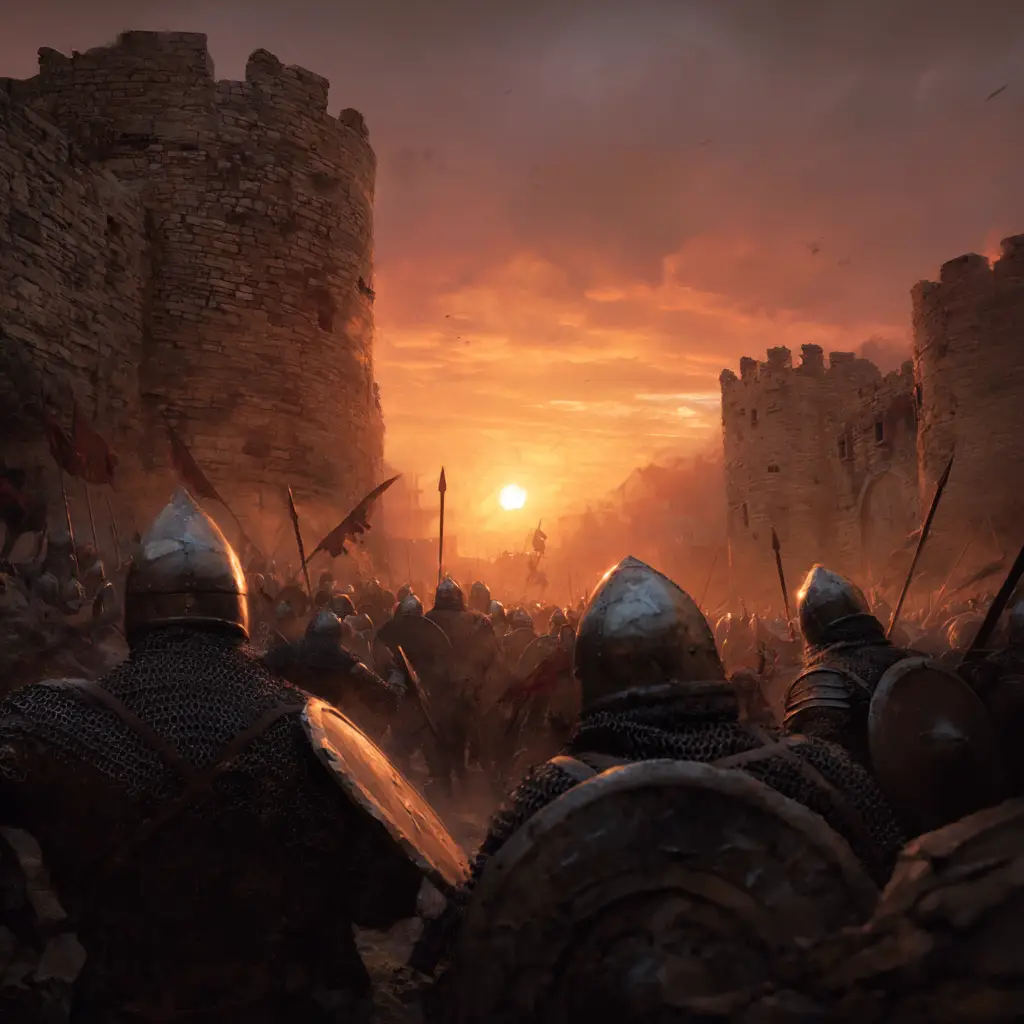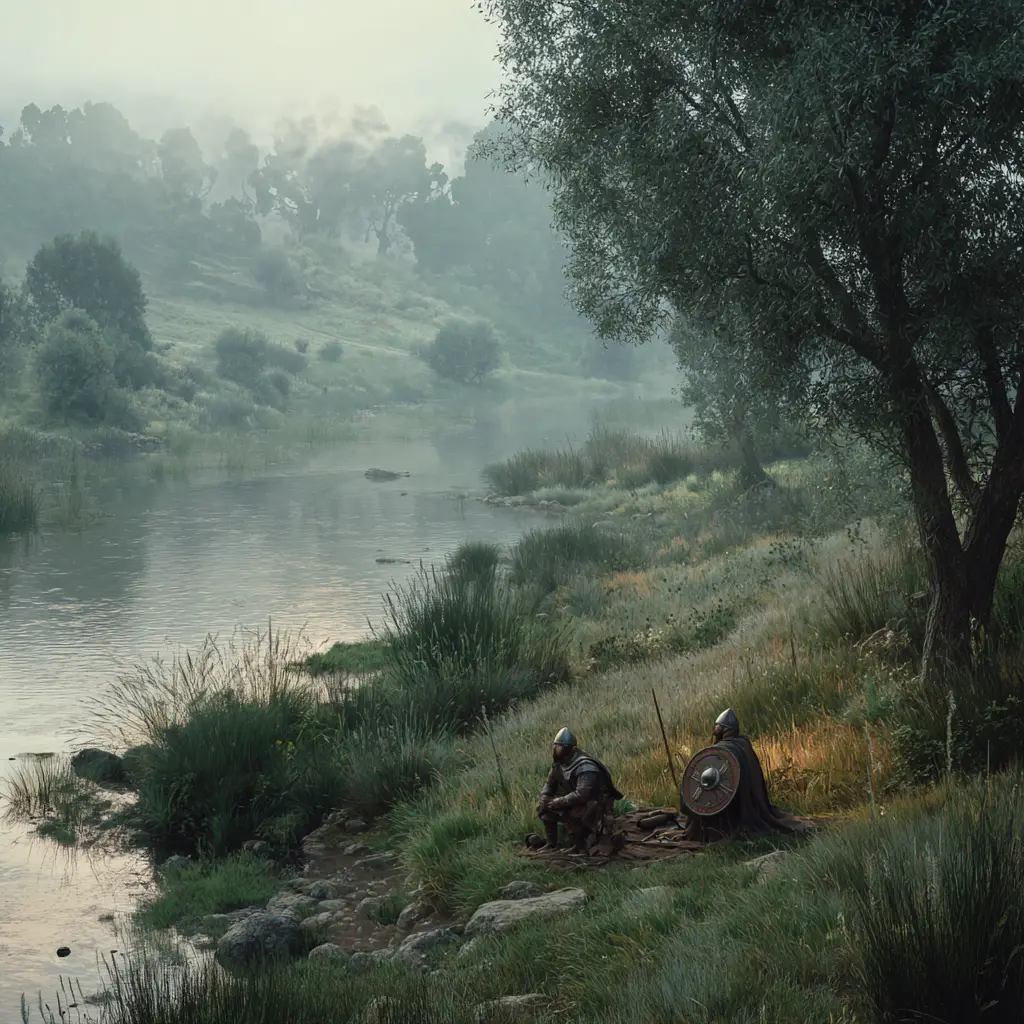The presence of Vikings in Spain is a lesser-known but fascinating part of their history. From the mid-ninth century, Norse raiders ventured far beyond the northern seas, drawn by the wealth of the Iberian Peninsula. Accounts from both Christian and Muslim chroniclers describe the sudden arrival of longships along the coasts of Galicia, Asturias, and Andalusia, leaving devastation in their wake but also showing the adaptability and ambition of the Viking seafarers.
One of the earliest recorded raids took place in 844 when a Viking fleet sailed through the Straits of Gibraltar and attacked the city of Seville, then under Muslim rule. The Norsemen plundered the surrounding area, but they were eventually defeated by the forces of the Emirate of Córdoba. Despite this setback, the scale of the expedition demonstrated that the Vikings were capable of sailing thousands of miles from their homelands and striking at some of the most powerful states of the time. Chroniclers note that captured raiders were executed, and defensive towers were built along the rivers to protect against further incursions.
In the north, the coasts of Galicia and Asturias suffered repeated Viking raids during the ninth and tenth centuries. These regions, with their rugged shorelines and wealthy monasteries, were prime targets. Local rulers attempted to resist, and fortifications were strengthened to guard against sudden attacks. The Vikings often struck quickly, taking plunder and captives before retreating to their ships. Yet some evidence suggests that they were not only raiders but also traders, exchanging goods with local populations when opportunities arose.
The impact of Viking activity in Spain was significant, though less enduring than in Britain, Ireland, or Normandy. The raids encouraged the development of coastal defences, watchtowers, and fortified settlements, particularly along vulnerable river routes. They also left a mark on Spanish chronicles, which describe the Norse as fierce and relentless warriors. While the Vikings never established permanent settlements in Spain, their expeditions show the extraordinary reach of their voyages, extending from the North Atlantic to the Mediterranean.
The legacy of the Viking presence in Spain lies in the stories preserved in both Christian and Muslim records, offering a rare glimpse into encounters between northern seafarers and the rich cultures of medieval Iberia. These episodes remind us of the wide horizons of the Viking world, where even distant lands such as Spain were drawn into the sphere of their daring and ambition.
844 – The Viking Raid on Seville
A large fleet of Norse longships arrived off the coast of Galicia before sailing south through the Straits of Gibraltar. They attacked Lisbon in Portugal and then advanced up the Guadalquivir River, launching a major raid on Seville, then under the Emirate of Córdoba. The city was plundered, but a strong Muslim army retaliated. The Vikings were heavily defeated, many were executed, and defensive towers were built along the river to prevent further attacks.
859–861 – The Mediterranean Expedition
A powerful fleet of Vikings, possibly based in northern France, set sail for Iberia. They attacked the coasts of Galicia and then entered the Straits of Gibraltar. From there they raided Algeciras and other towns, continuing across the western Mediterranean. Some sailed on to raid the Balearic Islands, southern France, and even Italy. Chroniclers note that they captured great wealth and many slaves during these long voyages.
966 – The Raid on Galicia
Another Viking fleet struck in Galicia. Local sources describe fierce fighting and the devastation of coastal areas. The defenders strengthened their fortifications, particularly around Santiago de Compostela, which was a rich religious centre vulnerable to seaborne attack.
968 – The Invasion of Bishop Sisnando Menéndez’s Lands
In this year, a large Viking force returned to Galicia and carried out widespread raids. Bishop Sisnando Menéndez of Santiago de Compostela led local forces against them, but he was killed in battle. The loss of such a prominent leader highlighted the serious threat posed by Viking incursions, even more than a century after their first attacks.
11th Century – Sporadic Raids and Trading
By the later centuries of the Viking Age, raids on Spain became less frequent but did not vanish entirely. Some small expeditions are recorded along the Galician coast, though on a smaller scale than before. It is also thought that Norse traders occasionally visited Iberian ports, exchanging goods rather than engaging in war.
This timeline shows how Viking fleets reached Spain at different times over more than a hundred years. They never settled permanently as they did in Britain or Normandy, but their attacks shaped local defences, military responses, and the memory of both Christian and Muslim chroniclers.
Spanish Accounts of the Vikings
The memory of the Viking presence in Spain survives through the writings of both Christian and Muslim chroniclers. These accounts describe the Norse raiders as sudden and terrifying enemies, arriving without warning from the sea.
Muslim writers of al-Andalus referred to the Vikings as Majus or pagans, often describing them in terms of their ferocity and destructive power. The raid on Seville in 844 left such a mark that chroniclers wrote of entire districts being plundered and set ablaze, with thousands of people taken captive. The emir’s response was celebrated as a victory of civilisation over barbarism, reinforcing the need for fortified river defences.
Christian sources in Galicia and Asturias also speak of the Norse with fear and awe. Chronicles record them as foreign invaders with immense strength and cruelty, whose arrival brought fire and devastation to coastal monasteries and towns. The death of Bishop Sisnando Menéndez in 968 at the hands of Viking raiders is recorded as a great tragedy, reflecting the scale of the threat they posed.
These depictions show the Vikings as both a military danger and a cultural shock to Iberian societies. For Muslim writers they were an external menace against the stability of al-Andalus, while Christian authors cast them as yet another trial faced by the northern kingdoms struggling to defend their lands. Though written from different perspectives, both sets of sources highlight the impact the Vikings had on the Iberian Peninsula and the fear their sudden raids inspired.



